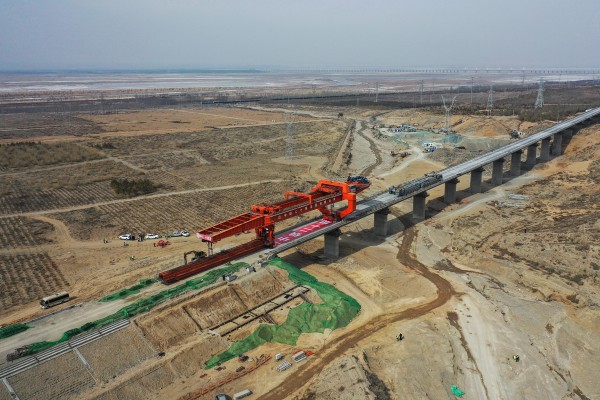Significant progress has been made on the Inner Mongolia section of Baotou-Yinchuan High-speed Railway with the completion of the Heyuancun Grand Bridge.

Construction on the Heyuancun Grand Bridge [Photo/sasac.gov.cn]
Stretching from Baotou in Inner Mongolia to Yinchuan in Ningxia Hui Autonomous Region, the railway is a crucial part of China’s “eight vertical and eight horizontal” high-speed rail network under the Beijing-Lanzhou corridor. The entire line spans 519 kilometers, with the Yinchuan-Huinong section already operational since October 2024. The Inner Mongolia section, totaling 402 kilometers, is expected to be fully opened within the year.
During construction, the project team navigated complex challenges, including proximity to the existing Baotou-Lanzhou Railway and dense power lines on both sides of the route. To overcome these difficulties, China Railway Construction Corporation Limited and other participants leveraged advanced technologies such as the Internet of Things (IoT), intelligent sensors, automated equipment control and smart tensioning devices, significantly improving the efficiency of box girder production.
For critical structures like the Wuhai Yellow River Grand Bridge, Dengkou Yellow River Grand Bridge and Gandershan Tunnel, the project team utilized Building Information Modeling technology to conduct virtual simulations, greatly accelerating tunnel excavation and bridge erection processes.
Once operational, the Baotou-Yinchuan High-speed Railway will complete the Beijing-Lanzhou corridor within the national high-speed rail network, eliminating gaps in high-speed rail coverage in western China. The project will greatly enhance travel convenience for local communities, strengthen regional connectivity, drive high-quality development along the Yellow River Economic Belt, and support China’s western development strategy in the new era.
(Executive editor: Wang Ruoting)